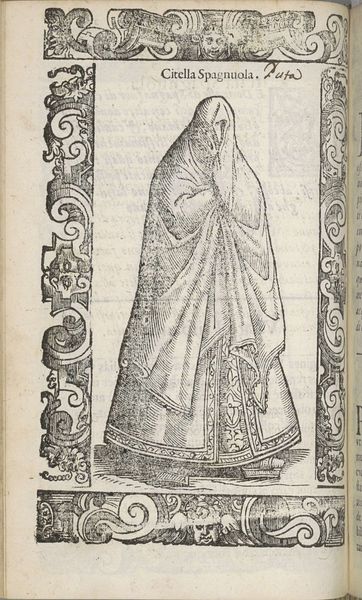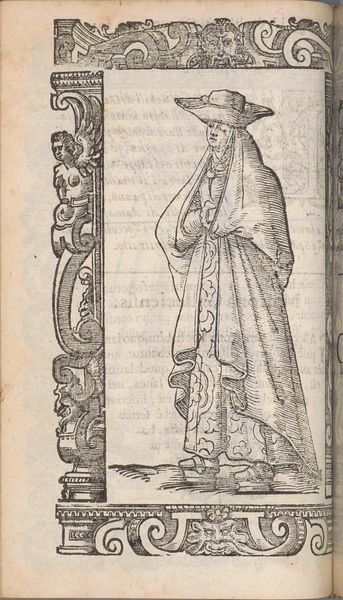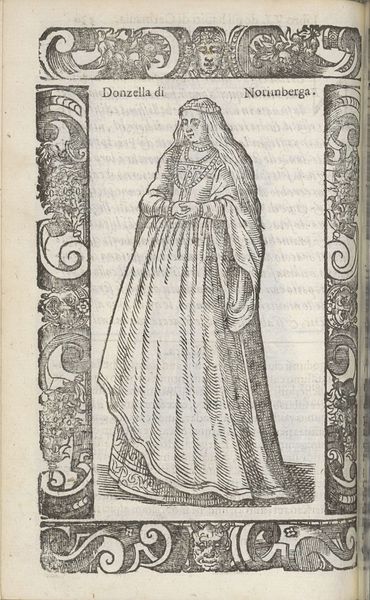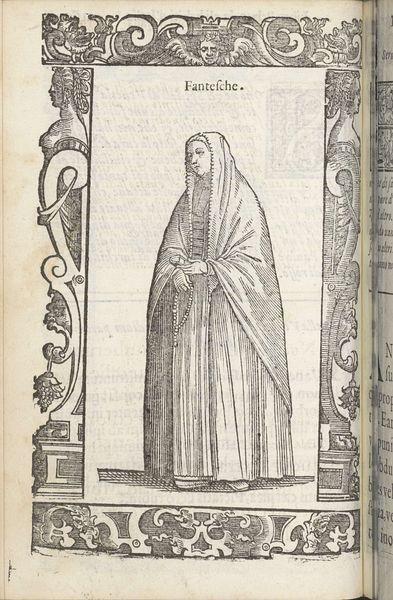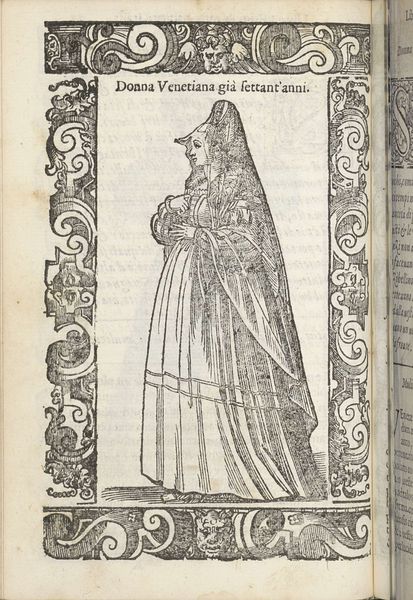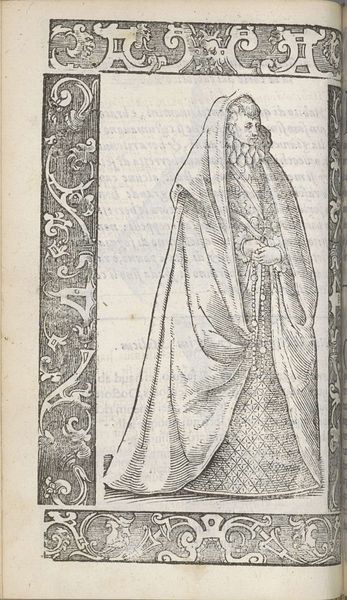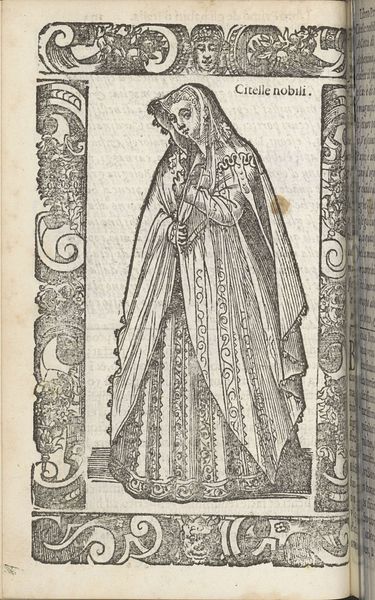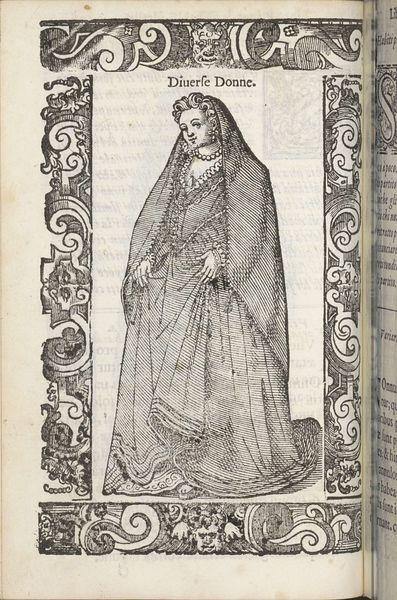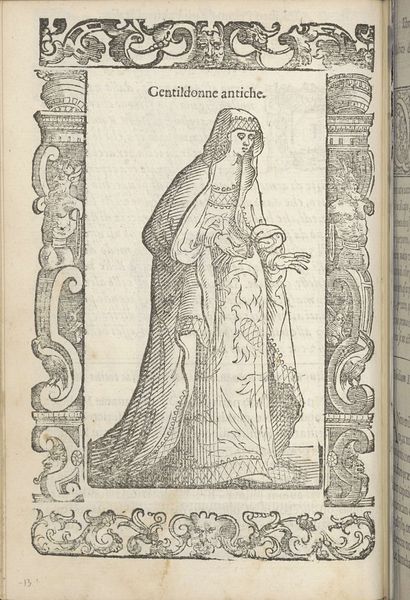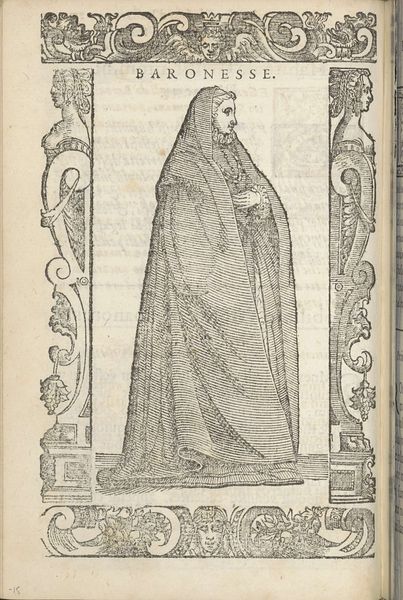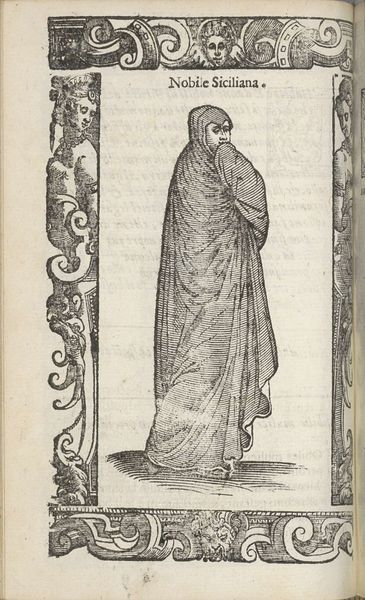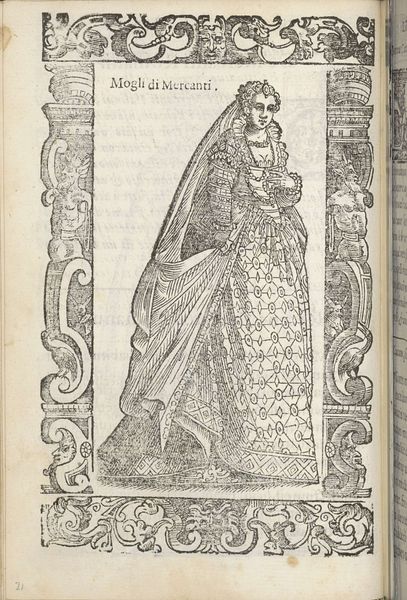
drawing, print, ink, engraving
#
portrait
#
drawing
#
pen drawing
# print
#
pen sketch
#
figuration
#
ink
#
italian-renaissance
#
engraving
Dimensions: height 167 mm, width 125 mm
Copyright: Rijks Museum: Open Domain
Editor: This engraving, "Matrona Spagnuola" by Christoph Krieger, created in 1598, shows a dignified Spanish woman. The intricate details of her garments are impressive. How can we interpret this representation of women in that period? Curator: This image provides a glimpse into the intersection of gender, culture, and power during the late Renaissance. Consider what it meant to represent a Spanish woman – a ‘Matrona’ – within a visual culture dominated by patriarchal structures. The very act of portraying her, likely for a male audience, raises questions about objectification and control. What details stand out to you that might speak to her identity and social position? Editor: The elaborate clothing definitely suggests wealth and status. The head covering seems particularly significant, maybe representing modesty or religious devotion. Curator: Exactly. Think about the social codes that dictated how women were seen and how they presented themselves. This head covering, and the layers of fabric, visually reinforce notions of female virtue and containment. But also note the ornamental details. Does this ornamentation challenge or reinforce patriarchal narratives? Editor: I hadn't thought about it that way. It's like the image is simultaneously upholding and negotiating societal expectations. The beauty feels celebratory, yet constrained. Curator: Precisely. And understanding that tension is key. Consider, too, that printmaking at this time was gaining prominence. It was disseminating images, including representations of women, far and wide, thereby shaping and reinforcing cultural perceptions. So, how does this piece speak to similar struggles and celebrations in contemporary culture? Editor: Looking at it with that lens, I realize how representations of women continue to be complex negotiations of identity, power, and visibility. Thanks; I definitely see it differently now! Curator: And I see how actively interrogating historical context opens space for critically viewing our current world. It is really fascinating to engage in these dialogues!
Comments
No comments
Be the first to comment and join the conversation on the ultimate creative platform.
